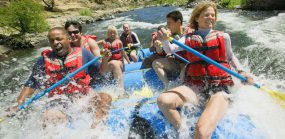Adventure Racing and Leptospirosis
What is leptospirosis?
Leptospirosis is a disease caused by bacteria called leptospires. It occurs worldwide and can affect humans and animals, including dogs and cats. The disease can be serious in both humans and animals. Leptospires are maintained in the genital and urinary tract. Ninety percent (90%) of those infected with the bacteria have no symptoms. Symptoms of leptospirosis are sometimes non-specific and can easily be confused with the flu. Such symptoms include fever, chills, vomiting, diarrhea, abdominal pain, or skin rash. Leptospirosis can potentially result in life-threatening infections of the kidney, liver, brain, lung, and heart.
What is adventure racing?
Adventure racing is a multi-discipline team or individual sporting event. Participants often travel to a remote wilderness location with the goal to compete against each other and challenge themselves out of their comfort zone. Races often feature unexpected tasks and difficulty levels and can last a few hours to several days, depending on the race. As the name implies, adventure racing entails adventurous, sporting activities in unfamiliar surroundings. Activities often include paddling (kayaking, canoeing, rafting), swimming, hiking through dense forest, cross country running and/or skiing, mountain biking, or climbing.
Am I at risk?

People who enjoy outdoor activities where freshwater or wet soil are encountered may be at risk for leptospirosis. This includes swimming, kayaking, rafting and canoeing in freshwater, hiking and camping. Learn how to help prevent infection and stay safe outdoors.
Adventure race participants should be aware of the potential risk of exposure to leptospires in unfamiliar environments where water may be contaminated with urine from infected animals, or the bacteria may be found in damp soil, vegetation and mud. Leptospires can survive in water or soil for weeks to months. Infection can occur when the organisms enter the body through cuts or abrasion in the skin, mucous membranes (nose, mouth, eyes) or consumption of wet food. Heavy rainfall or flooding can increase the likelihood of river and lake contamination. Adventure racers may be at increased risk for infection when they engage in sport activities (submersion, swimming, kayaking, canoeing, or rafting) in rivers, swamps or creeks. In the past, adventure racers have developed leptospirosis after white-water rafting trip in Costa Rica, participating in a triathlon in Wisconsin and Illinois, participating in an “Eco-Challenge” expedition race in Borneo, Malaysia, and adventure racing in a swamp in Florida.
How can I protect myself against leptospirosis while racing?
- Research the location to which you’ll be traveling.
- Be aware of possible infectious disease risks that you may encounter.
- Avoid contact with environments potentially contaminated with animal urine.
- Avoid swallowing water from lakes, rivers or swamps while swimming.
- Avoid participation in adventure racing activities if you have any cuts or abrasion of the skin.
- Wear protective clothing and shoes.
Is there a treatment for leptospirosis?
Be sure to contact your health care provider if you exhibit any symptoms suggestive of leptospirosis following participation in adventure race activities. The time between exposure and development of symptoms (also called the incubation period) for leptospirosis is 2 days to 4 weeks. Doxycycline, penicillin, or similar treatments are useful in treating leptospirosis.